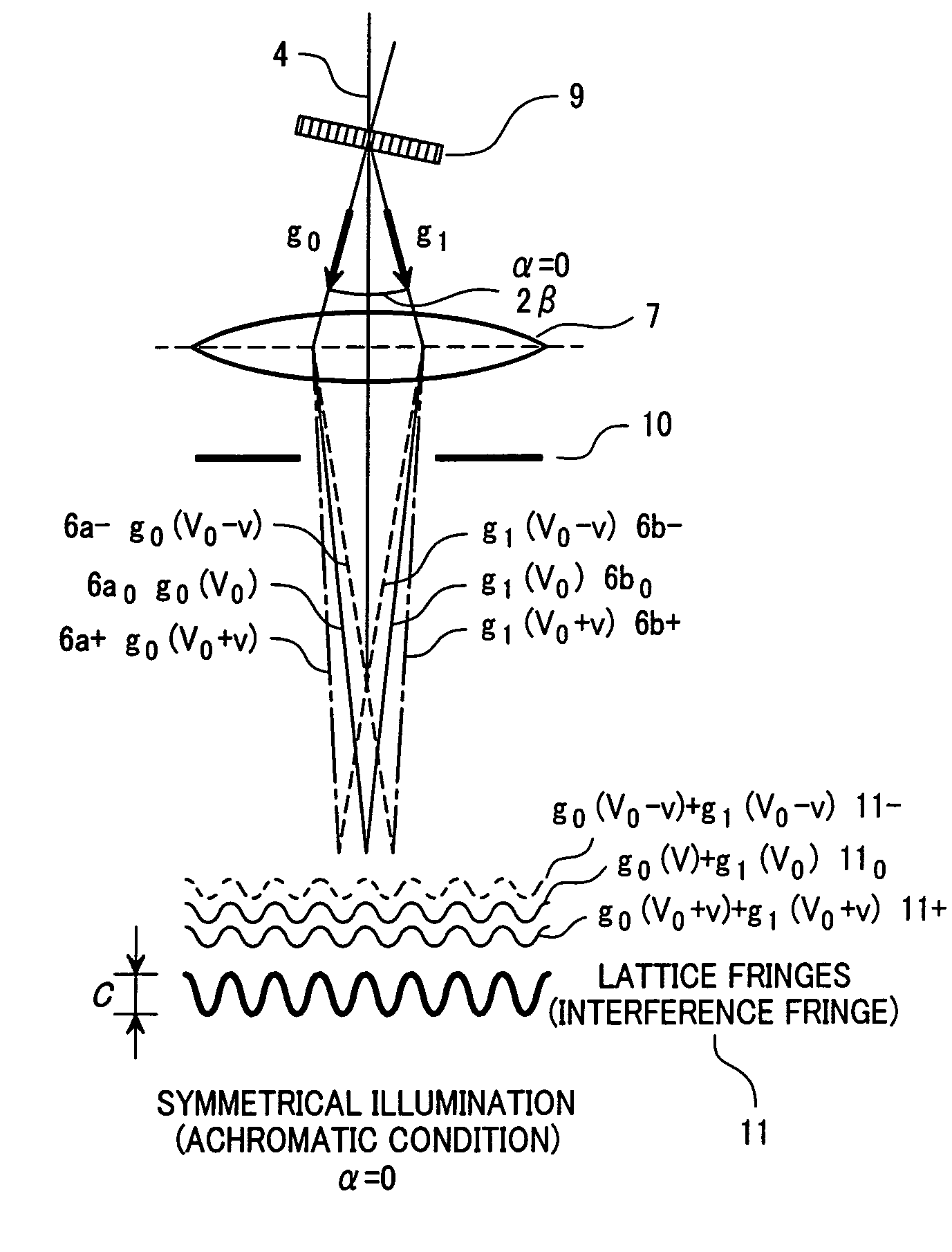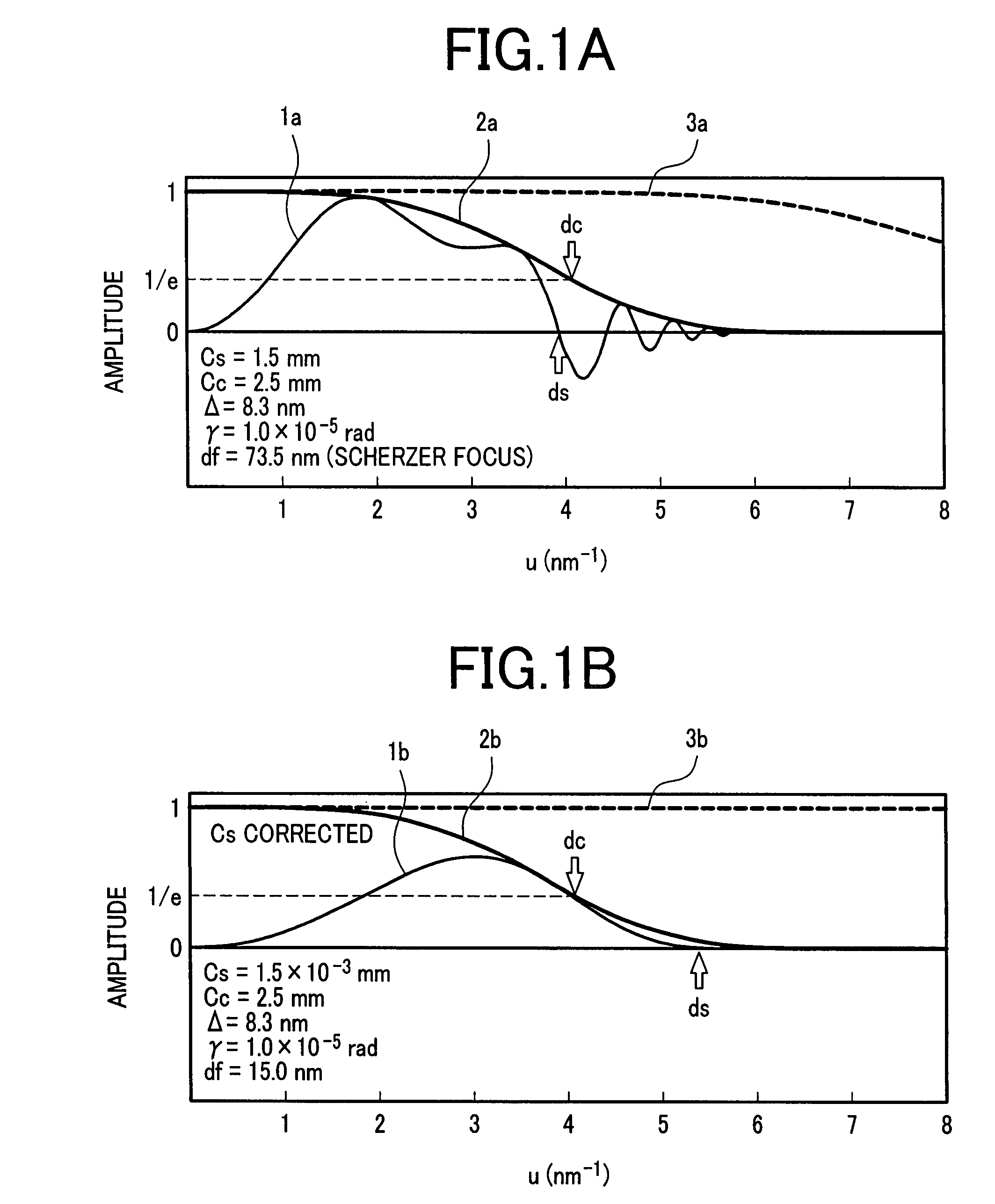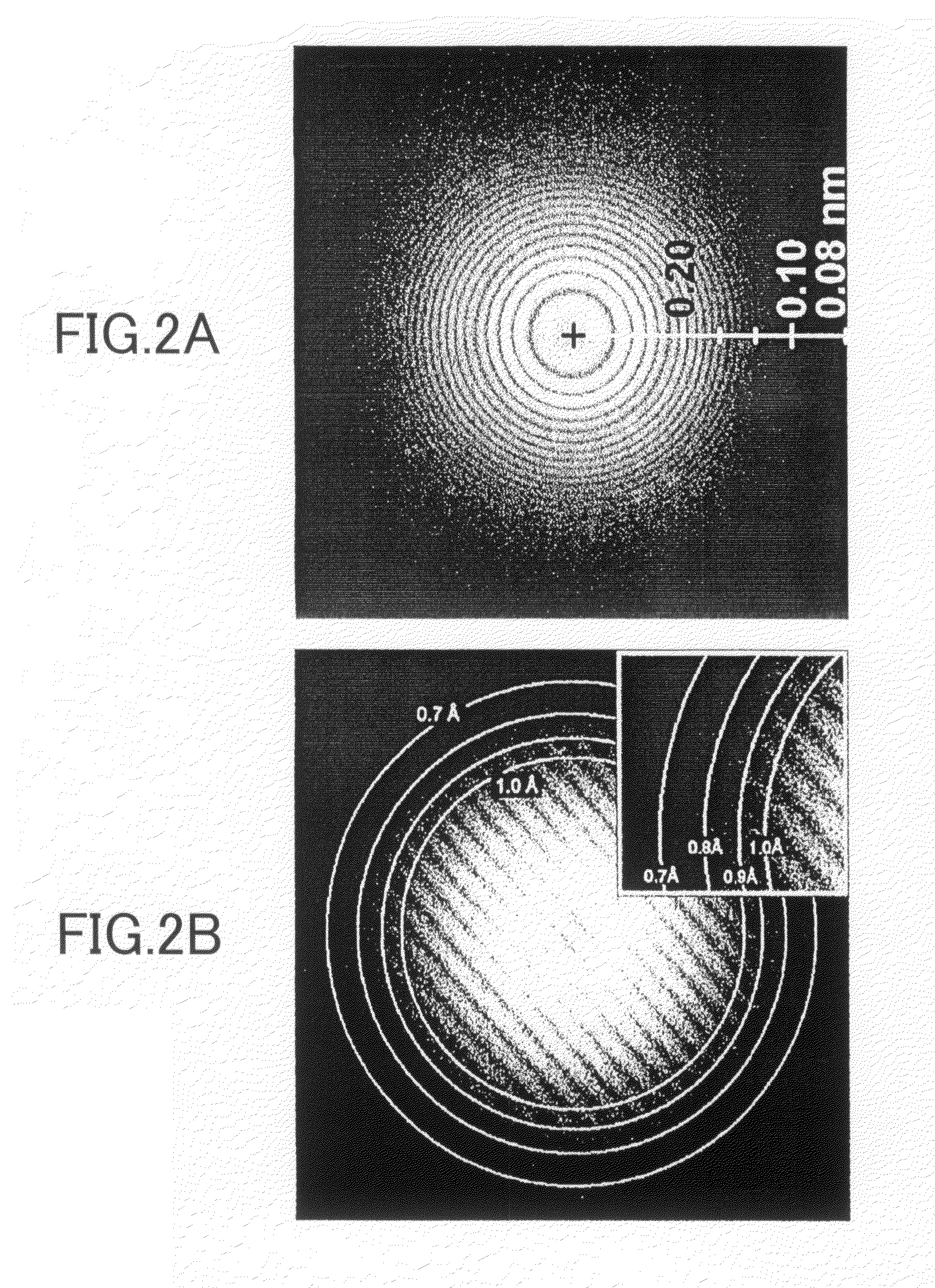Method for measuring information transfer limit in transmission electron microscope, and transmission electron microscope using the same
a technology of transmission electron microscope and information transfer limit, which is applied in the direction of material analysis using wave/particle radiation, instruments, nuclear elements, etc., can solve the problems of substantially restricting the resolution of an electron microscope, the phase of an electron beam cannot be correctly reproduced, and the image formed does not always correctly reflect the structure of an observational entity
- Summary
- Abstract
- Description
- Claims
- Application Information
AI Technical Summary
Benefits of technology
Problems solved by technology
Method used
Image
Examples
Embodiment Construction
[0064]FIG. 6 illustratively shows the configuration of a transmission electron microscope needed to implement measurement of an information transfer limit in accordance with the present invention. A transmission electron microscope 17 has an electron beam deflector 12 disposed above a crystal thin film 9 for the purpose of changing an incident angle at which an electron beam 4 emanating from an electron source 30 falls on the crystal thin film. Moreover, the transmission electron microscope includes a specimen tilting system 13 that adjusts the angle of a crystalline specimen itself. The electron beam 4 is scattered by the crystal thin film 9, and falls on an objective lens 7 as a diffracted electron beam 6. An aperture system 10 located below the objective lens 7 selects a diffracted wave. A lattice image is formed on an image plane 8 of the objective lens as a result of interference of the selected diffracted wave with other wave. The lattice image is enlarged by intermediate proj...
PUM
| Property | Measurement | Unit |
|---|---|---|
| defocus length df | aaaaa | aaaaa |
| defocus length df | aaaaa | aaaaa |
| defocus length df | aaaaa | aaaaa |
Abstract
Description
Claims
Application Information
 Login to View More
Login to View More - R&D
- Intellectual Property
- Life Sciences
- Materials
- Tech Scout
- Unparalleled Data Quality
- Higher Quality Content
- 60% Fewer Hallucinations
Browse by: Latest US Patents, China's latest patents, Technical Efficacy Thesaurus, Application Domain, Technology Topic, Popular Technical Reports.
© 2025 PatSnap. All rights reserved.Legal|Privacy policy|Modern Slavery Act Transparency Statement|Sitemap|About US| Contact US: help@patsnap.com



